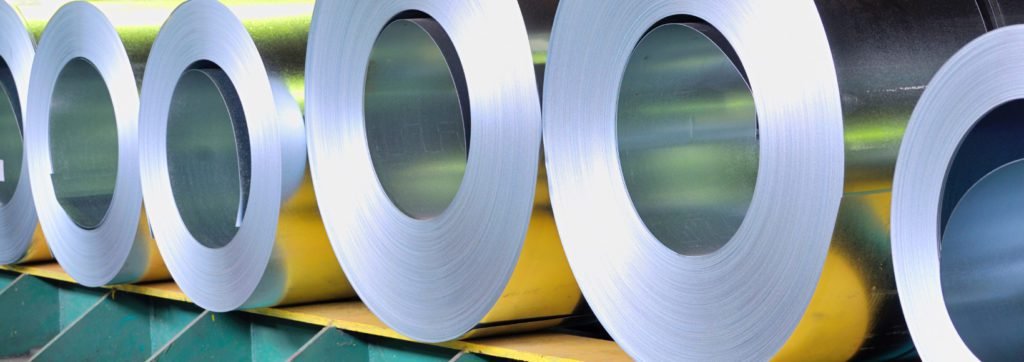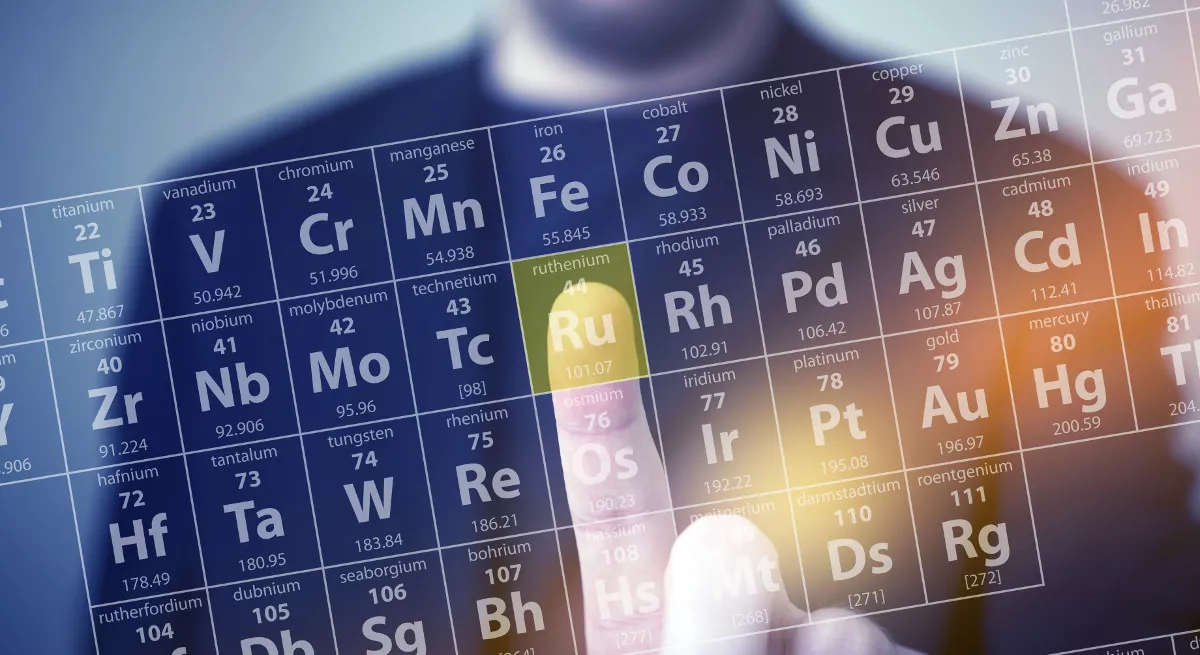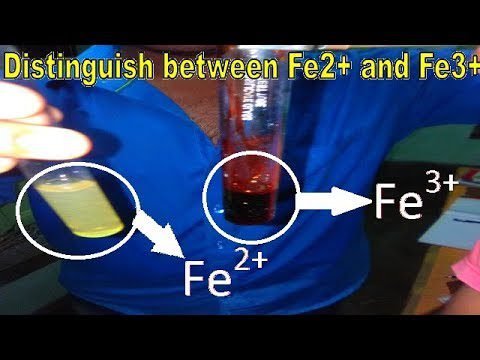
Vanadium is a periodic element with the atomic number 23. Vanadium is the 5th most abundant metal found in the earth’s crust. It is present in the 5th group and 4th period of the periodic table. Vanadium is a silvery metal that has the ability to resist corrosion. It is found abundantly in rocks, iron ores, and crude oils. This transition metal is also found in 65 different minerals. Vanadium has two naturally occurring isotopes only named vanadium 50, V50, and vanadium 51, V51. This metal has good structural strength. Vanadium forms alloys with a large number of elements.
Vanadium in periodic table:
Vanadium is represented by the symbol V. It is a transition metal that has an atomic number. This is present in the 4th period of the periodic table and in the 5th group of the periodic table. It is the d-block element.

Vanadium Atom:
Vanadium has atomic number 23 so it consists of 2 electrons in the first shell, 8 electrons in the 2nd shell 11 electrons in the third shell, and 2 electrons in the last shell. Vanadium has an atomic mass of 50.9425 atomic mass units. The total number of protons is 23 and electrons are 23. The number of neutrons is 28. Vanadium has electronic configuration 1s2, 2s2, 2p6, 3s2, 3p6, 3d3, 4s2 .

History:
- Vanadium was first discovered by Andres Manuel del Rio, a professor of mineralogy at the University of Mexico in 1801. He found firstly this element in lead ore from zimapan in Mexico. Del Rio found that it has similar chemical properties to that of chromium and uranium. And del Rio named this new element ‘erythronium’.
- After the del Rio, in 1830 Swede Sefstrom discovered the same element as found by Del Rio. Swede Sefstrom found this in lead ore and named this element vanadium.
- In 1831, Wohler found the same original erythronium of del Rio. And now it is known to be original ore as vanadinite.
- The great contributions to the chemistry of vanadium were by H.E. Roscoe, who works from 1868 to 1871 and he prepared compounds of vanadium as V2 O5, VO2, V2 O3, VO, VOCl3, VOCl, and many other compounds. He also studies the properties of these compounds.
Occurrence:
Vanadium is 5th abundant metal found in the earth’s crust. It has an abundance of 0.02 %. It is abundantly found in 65 different minerals. A small amount of vanadium has been found as deposited with lead, copper, and lead-zinc. The most important minerals are patronite, poly-sulfide VS4, and vanadinite 3Pb3 (VO4 )2. PbCl2, carnotite, roscoelite, mottramite, desclozite and tyuyaunite, a urinium and calcium bearing mica. It is also found in some organic complexes.
The major producer and consumer of vanadium are the United States. The carnotite ores of colorado contain 1-2% vanadium. And the other producers of vanadium are Northern Rhodesia, Peru, Venezuela, and France.
Vanadium is also be found to be present in the sun, stars, in meteorites and also it is known to be found in plants and animals in which it appears to play an important role.
High purity ductile vanadium is found to be prepared by reducing vanadium trichloride with magnesium. Vanadium is also prepared by calcium reduction of V2O5 in a pressure vessel.
Production methods:
Most methods for the preparation of vanadium include roasting of vanadium-containing ore to oxide or to metavanadate. Mostly vanadium is formed in the form of ferrovanadium that contains 35-95% vanadium.
Reducing agents used for vanadium oxides:
The oxides of vanadium that are formed are reduced by using carbon, silicon, and aluminum. In this aspect, carbon is being to be the cheapest reducing agent.
Aluminum is a much expensive reducing agent but the fact that it produces high quality and pure vanadium content.
The most widely used reducing agent is ferrosilicon, the reaction with ferrosilicon is carried out in a tight electric furnace. Lime converts the silica formed to calcium silicate.
2 V2O5 + 5Si → 4V + 5SiO2
SiO2 + CaO → CaSiO3
Pure metal is difficult to prepare. There is a reason behind this that it readily combines oxygen, carbon, nitrogen, and hydrogen and also it forms a solid solution with some products.
Principal method for preparation of pure metal:
Pure vanadium metal is very difficult to produce because in pure form it is very reactive. There are three methods for the preparation of pure vanadium metal. These three methods are discussed below in detail..
Reduction of vanadium tetrachloride:
Vanadium tetrachloride may be reduced by using sodium, hydrogen over magnesium at 700℃. There are impurities of vanadium oxy trichloride which is necessary to be removed. Oxygen is present as an interstitial element in the metal lattice that affects the ductility of the metal. In this method, there is a problem that VCl4 is separated difficultly from VOCl3. This problem is sorted out by reducing tetrachloride using hydrogen at 900℃ or by using magnesium at 750-800℃ in an argon atmosphere. The hydrogen associated with metal is removed by heating at 1000℃.
Reduction of pentoxide:
Another method for the preparation of pure vanadium metal is the reduction of pentoxide with a suitable reducing agent. The most used reducing agent is calcium.
The best way is to reduce pentoxide at 900-950℃ in an iron tube with the presence of calcium anhydrous calcium and some traces of sodium or potassium are used used to flux CaO for producing slag at temperature generated within the bomb. Calcium iodide is used to alter calcium chloride for this purpose.
Dissociation of diiodide:
This method is introduced by Van Arkle.
This method involves thermal dissociation of diiodide in incandescent tungsten filament. For this purpose first of all impure metal with iodide is sealed in vacuo into a silica tube consist of the tungsten filament. On giving heat of 900-1000℃ diiodide is produced. This diiodide has significant vapor pressure and then diiodide is decomposed and localized on the filament. And the metal which is deposited on this is pure up to >99.5% .And the other things like oxygen nitrogen left behind as oxides or nitrides and iodine is recirculated. Due to very less ability to evaporate of diiodide is not good for vanadium. This method has been refined by the Nash et al.
Finally it is introduced that 99.99% pure vanadium metal is produced by the electrorefining of calcium that reduced the vanadium in the bromide or chloride electrolytes.
For example:
If in a given weight of 51 KCl, 41 LiCl , and a 8VCl2 .The vanadium dichloride is reduced at cathode and vanadium is to be deposited on the cathode. On the other hand at anode oxidation and dissolution of vanadium is takes place . The overall electrorefining process is dependent on the selected vanadium solution into electrolyte. So the first cycle of refining process comprises of calcium as a anode material reduced the vanadium . And the second cycle is to deposition of reduced vanadium on the molybdenum cathode rod. Hardness of last product is 48 on Rockwell F scale.
Isotopes of Vanadium:
Vanadium has two naturally occurring isotopes that are V50 and V51 .Vanadium 50 is most stable one. The isotopes of vanadium are given below with their isotopic mass .
| Nuclide | Isotopic mass |
| 46V | 45.960 |
| 47V | 46.954 |
| 48V | 47.952 |
| 49V | 48.948 |
| 50V | 49.947 |
| 51V | 50.943 |
| 52V | 51.944 |
| 53V | 52.9433 |
| 54V | ——– |
Specific properties of Vanadium:
Some of the properties relevant to vanadium are here..
Atomic weight: 50.942
Electronic configuration: 1s2, 2s2, 2p6, 3s2, 3p6, 3d3, 4s2
Melting point: 1919℃
Boiling point: 3400℃
Heat of fusion: 21.5 j/mol
Heat of vaporization: 444j/mol
Thermal conductivity: 0.074 at 100℃
Electrical resistivity at 20℃: 24.8-26.0 at 20℃
Heat of atomization ∆H =122.5Kcal /g atom
Density 20℃ X-rays: 6.092 g/cc
Radius 20℃:1.3112 A
Ionization energies:
1st Ionization potential: 6.74 ev
2nd ionization potential: 14.65 ev
3rd ionization potential: 29.31 ev
4th ionization potential: 48.0 ev
5th ionization potential: 65.2 ev
Physical properties of vanadium:
Vanadium is in greyish silver color this metal has the ability to crystalized like niobium and tantalum. It is noted that this metal undergoes a phase transition at a temperature of 1550℃. In pure form vanadium show the property of malleability and ductility .When it is impure the impurities like small amount of hydrogen makes it embrittle. Vanadium is very poorly paramagnetic and show the thermal conductivity similar to that of iron. This metal is hard and show the density 6.1 between of titanium and iron. In fact Vanadium has a good structural strength.
Chemical properties of vanadium:
Vanadium metal show a property of chemical resistance with alkalis, HCl , H2SO4 , and also show resistance to salted water. It shows the resistance to these compounds at ordinary temperature. But when high temperature is required it combines with non metals.
For example:
When at 660℃ it react with oxygen and it is oxidized into V2O5 .
Biological properties of vanadium:
Vanadium element is also found in animals and plants in very low percentage. An approximate of 0.5mg/m3 quantity of dust V2O5 is present in air. And o.1 mg/m3 of V2O5 fumes is present in air. Vanadium is essential for marine environment than that of terrestrial.
Tunicates consist of vanadium as a vanabins.

Amanita muscaria consist of amavadin.

Analytical chemistry of vanadium:
Vanadium element is analyzed by volumetric, colorimetric and gravimetric methods. These are discussed below.
Volumetric Analysis:
It is observed that vanadium is reduced by giving nitrogen atmosphere to a bivalent state in the presence of zinc and amalgam. This reaction is carried out into Nakazone reductor , and then amalgam is escaped out . Vanadium (II) is oxidized by using a standard oxidizing agent.
There is three electron change takes place in the whole process that is useful for determining the little amount of metal.
5V2+ + 3MnO–4 24H+ →5V5+ +3Mn2+ + 12H2O
As well as cadmium, lead and tin amalgams and also the metal itself affected the reduction step . By using other procedures the state of vanadium metal is affected. So to sort out this problem some satisfactory reagents are used e .g: sulfur dioxide ,ferrous sulfate.
When sulfur dioxide is used the boiling solution of vanadium is treated with stream of sulfur dioxide for 5-10 min. And after this extra stream of sulfur dioxide is removed by using stream of carbon dioxide.
Many other for direct reduction of vanadium (v) to vanadium (iv) are introduced and these are also used. The effective reducing reagent for this type of reduction is ferrous sulfate. And the indicators mostly used for these procedures are N-phenylanthranilic acid, diphenylamine, barium diphenylamine sulfate . Barium diphenylamine sulfate is also used for determining the vanadium in steel.
Colorimetric Analysis:
For colorimetric analysis most commonly used reagent is hydrogen peroxide.
First of all hydrogen peroxide is added to 0.1mg/ml vanadium solution in a sulfuric acid solution. As a result reddish brown peroxide complex is formed. It is necessary that small amount of hydrogen peroxide is to be used because large amount of hydrogen peroxide affected the color intensity. Specially it changes the color into yellow. Many other elements also form color complexes with hydrogen peroxide like Ti, Cr, Mo(vi), and W.
In case of titanium color complexes are removed by using fluoride ion or hydrofluoric acid. By adding these reagents color changes are removed such as the yellow color complex formed because of iron(III). If there is another element rather than titanium than iron(III) is decolorized by using phosphate ions. In case of tungsten interferences are removed by using oxalic acid.
Another method that is very sensitive colorimetric method is to used phospho-tungsten-vanadic acid . A yellow colored solution is formed by adding phosphoric acid and sodium tungstate to an acidic vanadate solution.
Another example of a sensitive colorimetric reaction is a reaction between vanadium and 8-hydrooxyquinoline.
Gravimetric Analysis:
Gravimetric methods are less common than colorimetric and volumetric methods for vanadium analysis.
One of the gravimetric method for vanadium analysis is ignition of vanadium containing material to the peroxides. This reaction is not satisfactory because oxides become starts to melts at 658 ℃ and then starts to volatilizes slowly. The vapors are also poisonous . In the presence of interfering elements vanadium first of all must be precipitated with some other complexes and then it is ignited to oxides.
However, in the absence of metals forming insoluble oxinates (Fe, Ti, Al, Zr, Mo , W, Co, Ni) vanadium is determined gravimetrically as oxine complex V2O3 (C9H6ON)4 .
Uses of Vanadium:
Vanadium’s alloys are used in many processes. Vanadium has vast application. Due to its occurrence in many organisms like fungi, algae , plants , invertebrates and some other species vanadium has effect on our environment. Uses of vanadium are discussed here.
Biological importance:
Vanadium supplements are used in the treatment of diseases like low blood sugar, tuberculosis, syphilis, high cholesterol, heart diseases, anemia and edema.
Vanadyl sulfate decreases the blood sugar level of diabetes 2 patient.
If someone has kidneys problem than it is harmful to use vanadium supplements because it damages the kidneys.
Vanadium also cause the neurological effects by retarding the some enzymes in animals. Vanadium also causes diseases like breathing disorders, badly effected kidney and liver also cause paralyses. It is revealed by some laboratory tests that it affected the male reproductive system and female placenta in animals.

Vanadium alloys:
Vanadium alloys are used in many industries specially in chemical industries for making pipes, tubes etc. It is discovered that small amount of vanadium is present in steel . And as we know that steel has vast applications in every field. Vanadium can stabilize the beta form of titanium.
Ferrovanadium being resistant alloy has an application to make axles, gears of vehicles, crankshafts, cutting tools. Vanadium is also used in jet engines, airframes, dental implants when it is mixed with aluminum and titanium alloys. Vanadium alloys shows the property of conduction and resistance.

As a Catalyst:
Vanadium is used as a catalyst .One of the most commercially used vanadium catalyst is vanadium pentoxide . Vanadium pentoxide V2O5 is an effective catalyst used in many reactions.
One of the major use of vanadium pentoxide is in contact process for sulfuric acid manufacturing.
In contact process of sulfuric acid production , first of all sulfur dioxide is oxidized and sulfur trioxide is formed in the presence of vanadium pentoxide.
SO2 + V2O5 → 2VO2 + SO3
Catalyst is regenerated by air.
4VO2 +O2 → 2V2O5

Vanadium is also used in the oxidation of propane or propylene .
In glass coating and ceramics:
VO2 is used in the glass coating processes. Vanadium oxides are used in induction of color in corundum to make jewelry. Vanadium pentoxide is used in ceramics.

Other Uses:
Vanadium ions of different oxidation states are used in the electrochemical cell solution of vanadium redox batteries. Generally +5 and +2 oxidation states of vanadium are present in a solution of an electrochemical cell. These vanadium redox batteries are used in energy storage purposes. Vanadium pentoxide has the ability to fix dyes in fabrics so vanadium pentoxide is used in these dyes processes also.



Leave a Reply